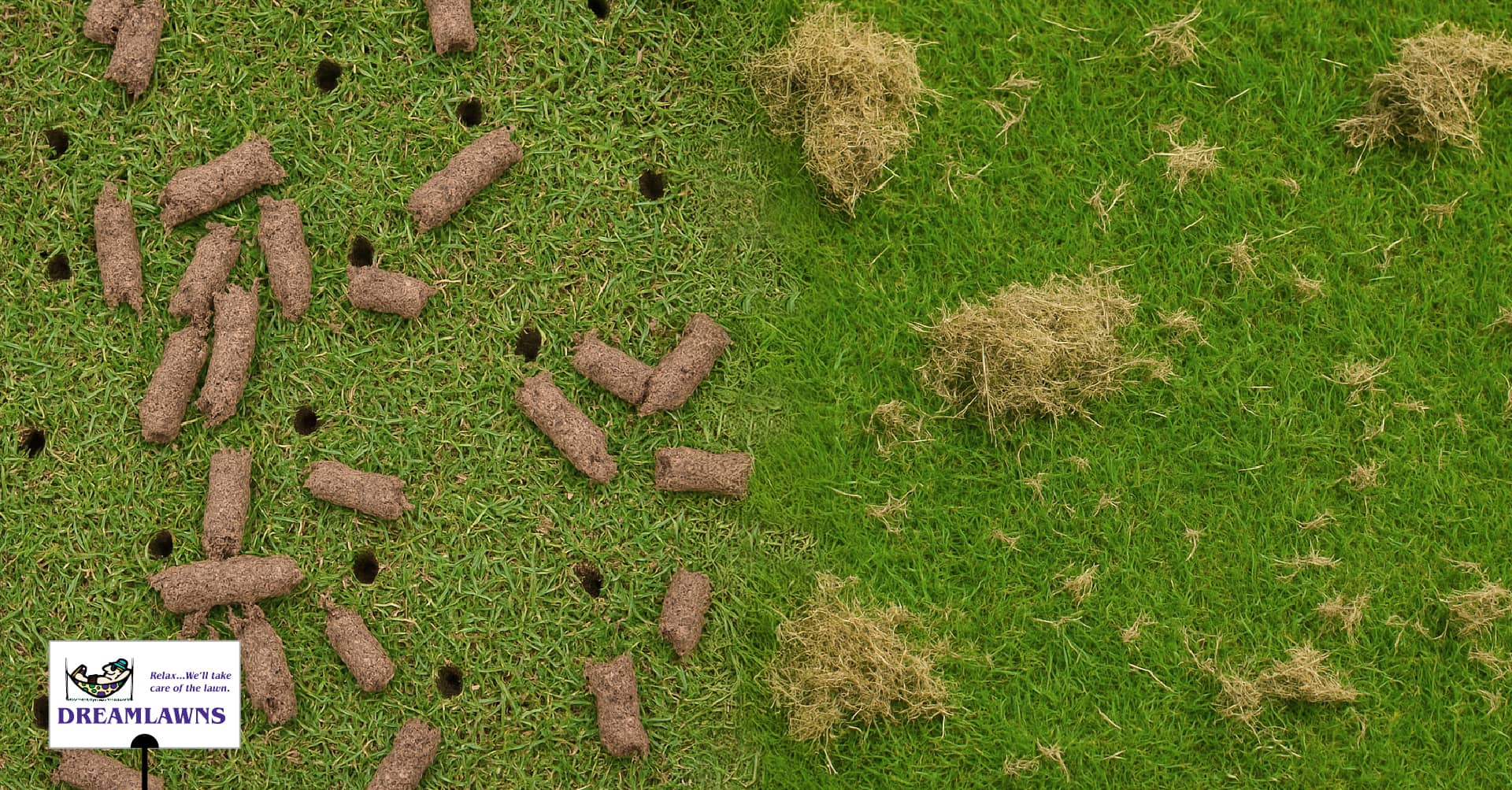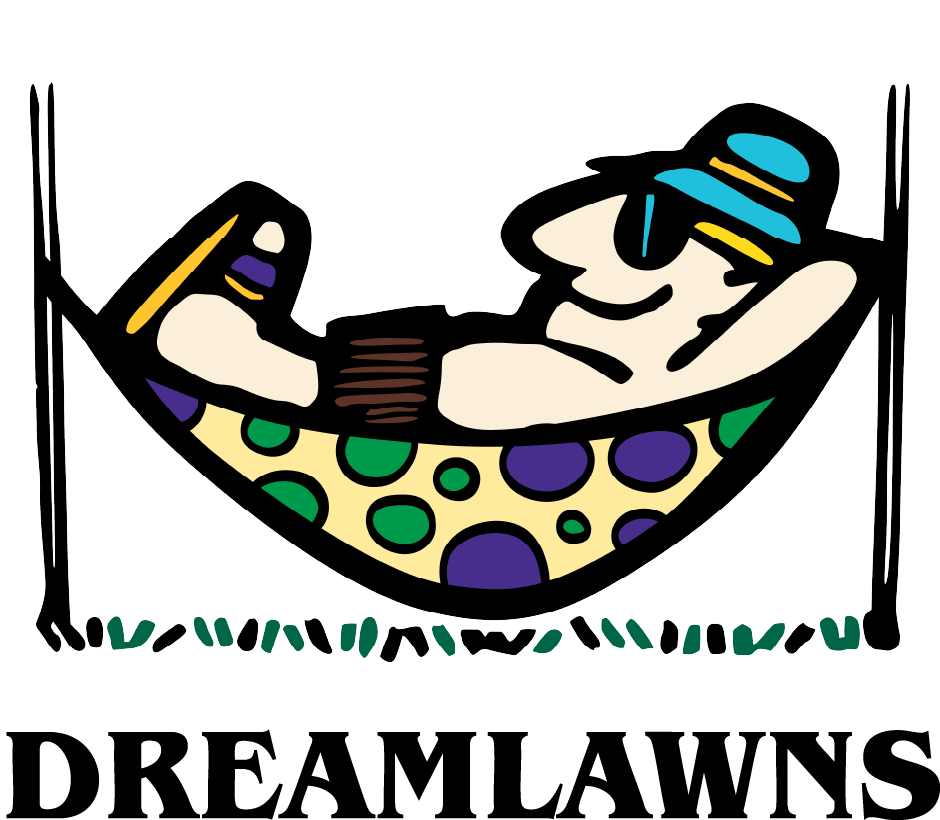
If you’ve ever looked into ways to improve your lawn’s health, chances are you’ve come across two popular, but often misunderstood services: lawn aeration and dethatching. At a glance, they might sound similar. Both are designed to improve your soil’s ability to breathe, absorb water, and support strong root systems. But despite some overlap in their goals, they address very different problems, and knowing which one your lawn needs (and when) can make all the difference in how thick, green, and resilient it grows.
For homeowners in Virginia Beach and the surrounding areas, where varying soil types, seasonal rainfall, and cool-season grasses like Fescue dominate, understanding the difference between these two services is even more important.
What Is Lawn Aeration?
Lawn aeration is the process of perforating the soil to allow essential elements, air, water, and nutrients, to penetrate deeper into the root zone. Over time, soil can become compacted from regular foot traffic, heavy rainfall, or even just the natural settling process. Compacted soil restricts root growth and reduces the lawn’s ability to take in what it needs to stay healthy.
What Does Aerating Your Lawn Do?
When you aerate your lawn, you create small holes in the soil that relieve compaction, stimulate root development, and improve drainage. This enhanced airflow encourages beneficial microbial activity and helps decompose organic matter more efficiently. For Fescue lawns, which are common in Virginia Beach, aeration is especially valuable for encouraging strong root systems and improving turf density.
Types of Lawn Aeration
Core Aeration: Core Aeration involves a machine that removes small plugs—or “cores”—of soil from the lawn. These plugs break down naturally over time, returning nutrients to the soil.
Spike Aeration: Spike Aeration uses solid tines or spikes to poke holes in the soil. This is a quicker method but can actually contribute to compaction around the hole, which makes it less effective than core aeration.
Liquid Aeration: Liquid Aeration involves spraying a chemical solution that breaks down compacted soil at a microscopic level. While convenient, it’s generally used as a supplement, not a replacement, for mechanical aeration.
What Is Dethatching?
Dethatching is the process of removing the thatch layer, a dense mat of dead grass, roots, stems, and organic matter that accumulates between the green grass blades and the soil surface. While a thin layer of thatch is normal and even beneficial, too much thatch acts like a sponge, trapping moisture and preventing essential elements like air, water, and nutrients from reaching the root zone.
What Causes Thatch to Build Up?
Thatch buildup occurs when organic matter accumulates faster than it can break down. Factors like over-fertilization, shallow watering, and poor microbial activity can accelerate thatch development. Lawns with heavy clay soils or frequent use of high-nitrogen fertilizers tend to have more aggressive thatch issues.
Why Is Excess Thatch a Problem?
When thatch becomes too thick, typically more than ½ inch, it creates a barrier between your grass and the soil. Water may pool on the surface instead of soaking in, roots may begin to grow in the thatch rather than the soil, and the lawn becomes more vulnerable to pests and diseases. Excessive thatch also insulates the soil, which can lead to shallow root systems and reduced tolerance to heat and drought.
How Dethatching Works
Manual Raking: For small areas or minor thatch buildup, a stiff rake can be used to pull up the thatch layer.
Power Dethatchers (Vertical Mowers): These machines slice through the thatch and lift it to the surface for removal. This is the most effective method for larger lawns or severe thatch problems.
Dethatching Rakes: These specialized rakes have sharp tines designed to cut through the thatch. They’re ideal for small lawns or spot treatments.
If your lawn feels spongy when you walk on it or shows signs of poor water absorption, it may be time to dethatch.
Key Differences Between Aeration and Dethatching
While both aeration and dethatching are methods used to improve lawn health by enhancing airflow, water absorption, and nutrient delivery, they address two very different problems. Understanding the distinction is essential when deciding which treatment your lawn actually needs, or if it would benefit from both.
The Problem They Solve
Aeration targets soil compaction. Over time, soil can become dense and tightly packed, making it difficult for roots to expand and for water and nutrients to penetrate.
Dethatching addresses the build-up of organic material on top of the soil that prevents water, air, and nutrients from reaching the roots.
Where They Work
Aeration works below the surface, breaking up compacted soil to create space for deeper root growth.
Dethatching focuses on the surface layer, removing the spongy organic mat that suffocates the lawn.
Tools and Methods Used
Aeration typically involves core aerators or spike aerators that puncture or remove plugs of soil.
Dethatching uses specialized rakes or power dethatchers to rip out the thatch layer and expose the soil.
Visual Signs to Watch For
Signs you need aeration: Water pooling on the lawn, stunted growth, or hard, compacted soil that’s difficult to penetrate with a shovel.
Signs you need dethatching: A spongy feel underfoot, visible matting at the base of the grass, or patches of lawn that appear dry or dead despite regular watering.
How They Affect Your Lawn’s Recovery
Aeration helps the lawn breathe and promotes long-term soil health, making it a great companion to overseeding and fertilization.
Dethatching can be more aggressive and may temporarily thin the lawn, but it’s critical when the thatch layer becomes a barrier to healthy growth.
Should You Do Both?
Yes—sometimes. If your lawn has both compacted soil and a thick thatch layer, combining dethatching and aeration can be extremely beneficial. For example, you might dethatch first to remove the barrier, then aerate to break up the soil and allow deeper root development. However, timing and turf condition matter, and not all lawns require both treatments every year.
Understanding these key differences helps ensure you’re not just doing “something” for your lawn, but doing the right thing for its specific condition.
How to Know What Your Lawn Needs
Knowing whether your lawn needs aeration, dethatching, or both requires more than guesswork, it requires a clear understanding of what’s happening both above and below the surface. Many homeowners misdiagnose lawn issues, treating symptoms like poor color or patchiness without addressing the root cause. Fortunately, there are visible cues and simple assessments you can do (or have a professional like Dreamlawns do) to determine exactly what your lawn needs.
Signs Your Lawn Needs Aeration:
Hard, compacted soil: If you struggle to insert a screwdriver or garden fork into the soil, it’s a clear sign of compaction.
Poor drainage or water pooling: Water that sits on the surface instead of soaking in often indicates that the soil is too dense.
Patchy, thin, or slow-growing grass: If your lawn isn’t responding well to watering or fertilization, compaction may be choking the roots.
Heavy foot traffic or use: Lawns that are walked on frequently, especially by kids, pets, or during events, are more likely to become compacted over time.
Signs Your Lawn Needs Dethatching:
Spongy texture when walking on the lawn: A noticeable bounce underfoot suggests a thick thatch layer.
Thatch layer thicker than ½ inch: Use a spade to dig up a small section of lawn. If the thatch layer is thicker than half an inch, it’s time to dethatch.
Uneven coloration or dry spots: Thatch can block water from reaching the roots, leading to dead or underperforming patches.
Matted, web-like debris at the soil line: This is a visual cue that organic matter has built up beyond a healthy threshold.
How Often Should You Aerate or Dethatch?
Aeration: Late spring/early summer is an ideal time for aerating warm-season grass, such as Bermuda, St. Augustine, Zoysia, and Centipede. Aerating in the spring helps the grass recover from winter dormancy and prepares it for the growing season ahead.
Late summer through mid-fall is the optimal time for aerating cool-season grass, particularly fescue turf. As the cooler temperatures and increased precipitation create optimal conditions for recovery and growth. Warm-season grasses like Bermuda and Zoysia can also benefit from late summer aeration.
Dethatching: Most lawns don’t need dethatching annually. Once every 2–3 years is usually sufficient unless you notice symptoms earlier. However, lawns with excessive fertilization, frequent mowing without mulching, or poor microbial activity may require more frequent attention. In some instances, you may need to rake out areas that suffered from heat or stress of the summer; however, will not need to dethatch your entire lawn.
Understanding what your lawn needs, and when, is the first step toward a healthier, greener yard. Whether you’re dealing with poor drainage, weak growth, or that spongy feel underfoot, a proper diagnosis is key.
Dreamlawns’ Customized Lawn Care Approach
At Dreamlawns, we know that no two lawns are the same. That’s why we don’t offer one-size-fits-all solutions, we offer property-specific, seasonally-adjusted lawn care programs tailored to the unique needs of your lawn, soil, and turf type.
When you schedule a service with Dreamlawns, we begin with a detailed property assessment. Our technicians evaluate factors like soil compaction, grass density, moisture retention, nutrient levels, turf variety, sun exposure, and your overall lawn goals. This allows us to determine exactly what your lawn needs and when, whether that’s aeration, fertilization, pest control, overseeding, or a combination of several treatments timed for optimal impact.
While we don’t currently offer dethatching as a standalone service, our thorough assessments will identify when excessive thatch is affecting your lawn’s health. If thatch buildup is a concern, we’ll offer guidance on whether manual dethatching or mechanical treatment is appropriate and help integrate it into your broader care strategy.
If you’re a hands-on homeowner, we’re also happy to provide customized DIY schedules and recommendations based on your lawn’s current condition and your goals. Whether you want to actively manage your lawn with professional support or leave the heavy lifting to us, our focus is always on helping you achieve a thriving, beautiful lawn through science-backed, locally informed care.
Work With Us
Lawn aeration and dethatching are two powerful but distinct lawn care practices that serve different purposes. While aeration tackles compacted soil and encourages deeper root growth, dethatching removes the organic buildup that can suffocate your lawn. Knowing when, and if, your lawn needs one or both is key to maintaining a healthy, resilient turf.
At Dreamlawns, we take the guesswork out of lawn care with property-specific assessments and a year-round program that adapts to the needs of your lawn in every season. Whether you’re dealing with hard soil, patchy growth, or unsure about what’s holding your lawn back, we’re here to deliver expert recommendations and tailored treatments that bring out the best in your grass.
Want to find out what your lawn actually needs? Get started with a free estimate today and let our experts design a care program that works as hard as you do.
Dreamlawns provides superior lawn care service to Virginia Beach & Chesapeake VA residents.




